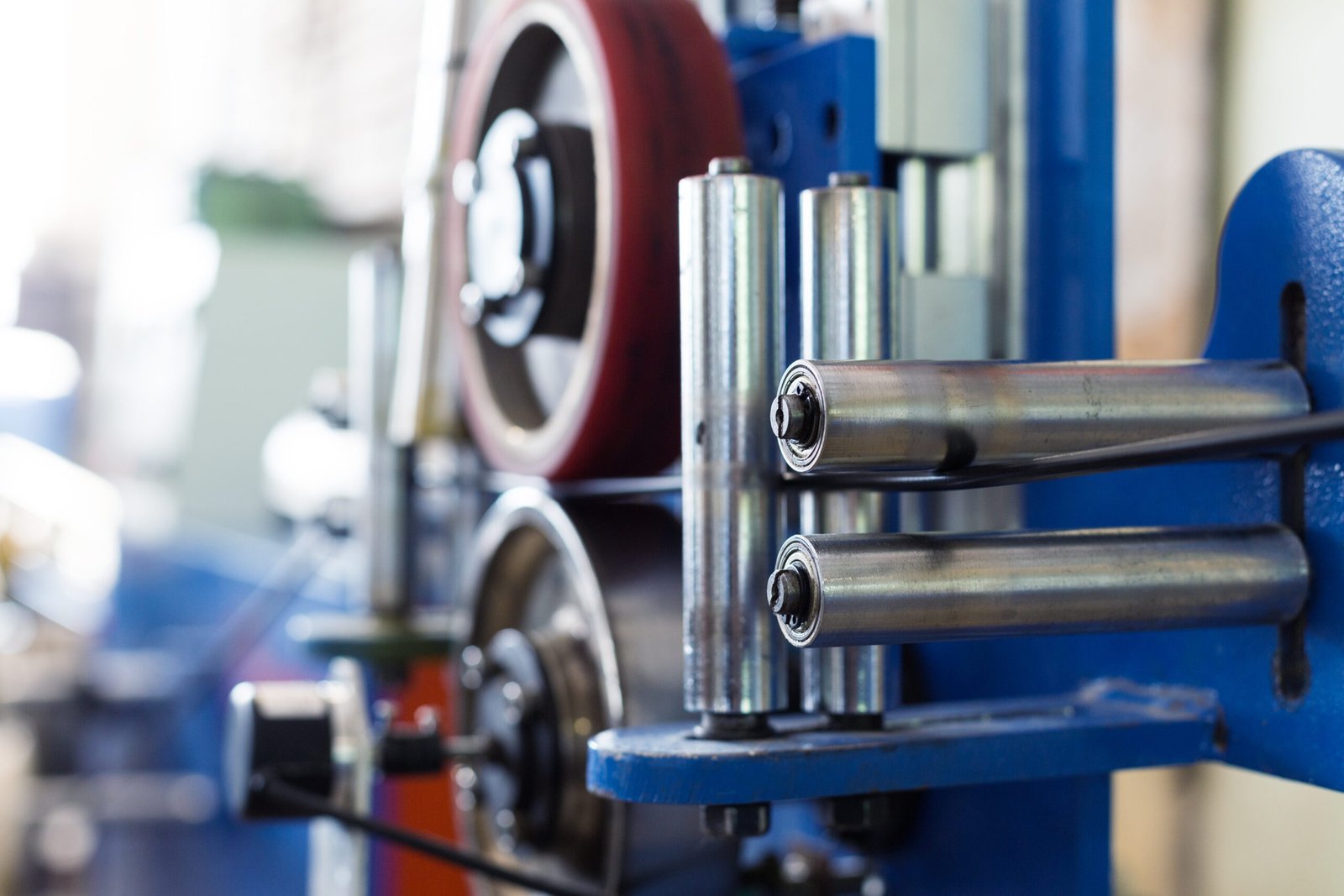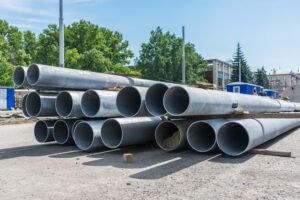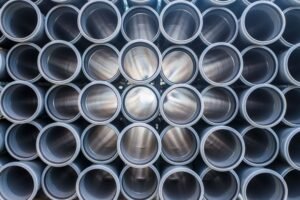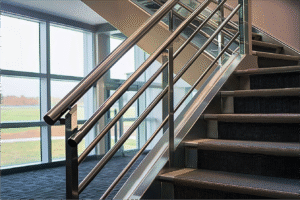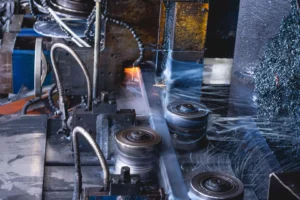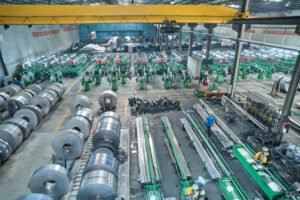Marine-Grade Stainless Steel Pipes for Coastal Projects
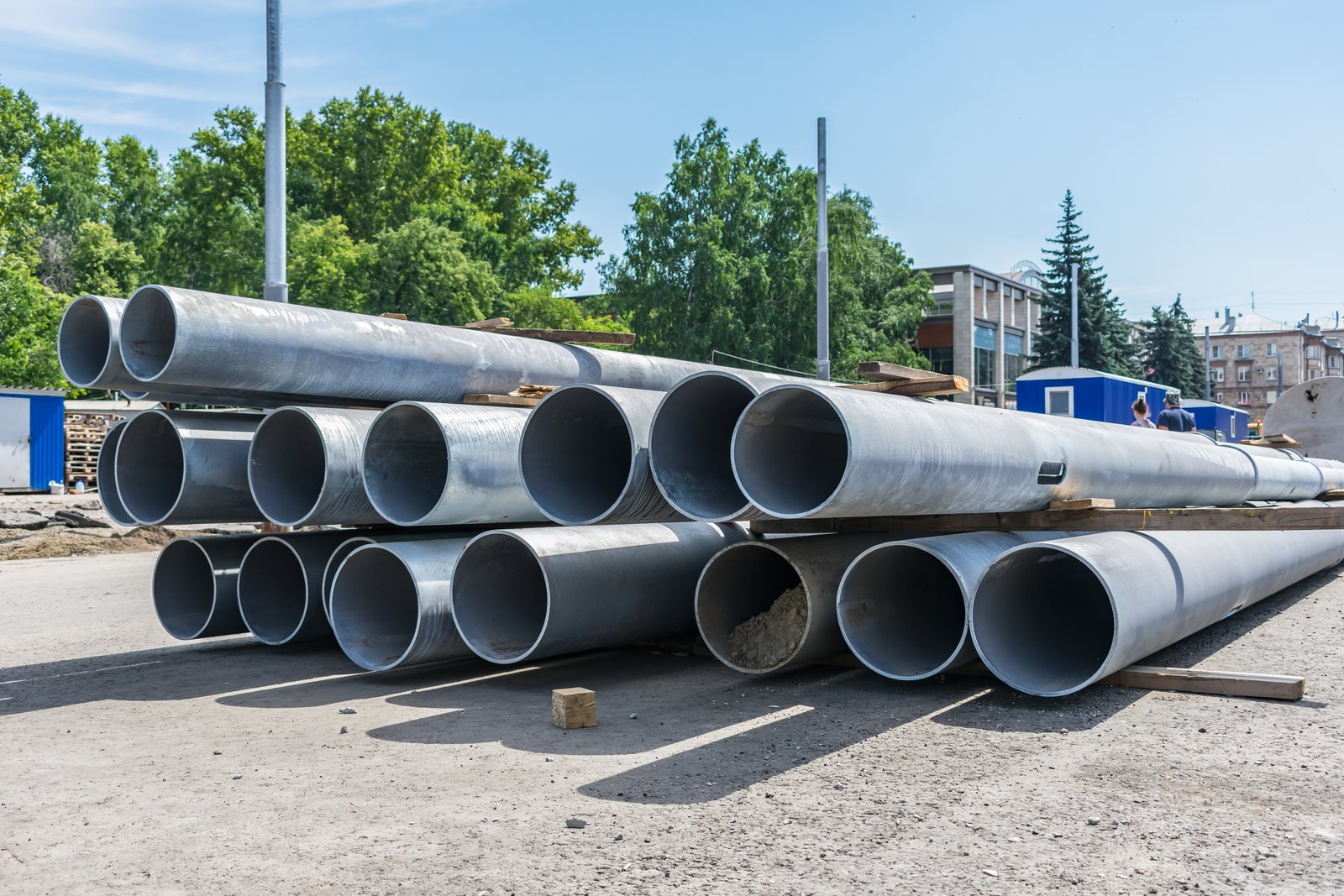
Are you grappling with the relentless assault of corrosive marine environments on your coastal projects? The constant exposure to saltwater, humidity, and abrasive elements can lead to premature material failure, costly repairs, and significant downtime. At MFY, we understand these challenges intimately and know that marine-grade stainless steel pipes1 offer a robust and lasting solution.
Marine-grade stainless steel, typically austenitic grades like 316/316L or duplex stainless steels, is ideal for coastal projects due to its enhanced corrosion resistance, particularly against chloride-induced pitting and crevice corrosion, thanks to its molybdenum content and higher chromium levels, ensuring structural integrity and longevity.
The decision to invest in the right materials for coastal infrastructure is paramount, as the integrity of these projects directly impacts safety, operational efficiency, and long-term economic viability. We've seen firsthand how choosing subpar materials can lead to a cascade of problems. That's why I want to share my insights on why marine-grade stainless steel pipes are not just a good choice, but often the essential choice for the demanding conditions of coastal environments.
Selecting the appropriate materials for coastal projects is a critical decision that balances upfront investment with long-term performance and maintenance costs. While marine-grade stainless steel, such as 316L or duplex grades, offers superior corrosion resistance compared to carbon steel or even standard stainless grades, its higher initial cost can be a point of deliberation. However, from my experience at MFY, when we analyze the total lifecycle cost, including reduced maintenance, fewer replacements, and minimized operational disruptions due to material failure, the economic argument strongly favors these specialized alloys. Industry studies, for instance, often highlight that the cost of corrosion globally runs into trillions of dollars annually. For a project like a desalination plant in the Middle East, using a lesser grade might save a fraction initially but could lead to catastrophic failures and shutdowns costing millions in lost revenue and repair, far outweighing the initial savings. Thus, a critical understanding of the specific environmental aggressors – salinity, temperature, pollution levels, and mechanical stresses – is crucial for making an informed, cost-effective, and reliable material choice.
What makes marine-grade stainless steel ideal for coastal projects?
Are your coastal construction projects constantly battling the harsh, corrosive power of the sea? This relentless attack can degrade standard materials quickly, leading to structural weaknesses and expensive, frequent repairs. Marine-grade stainless steel, with its specialized composition, provides the exceptional resilience needed to withstand these demanding environments effectively.
Marine-grade stainless steel, particularly alloys like 316L and duplex grades, is ideal due to its higher chromium and molybdenum content. These elements form a robust, self-repairing passive layer, offering superior resistance to chloride-induced pitting, crevice corrosion, and general corrosion common in saline environments.
The unique properties of marine-grade stainless steel aren't just a matter of chemical composition; they translate into tangible benefits that ensure the longevity and safety of critical coastal infrastructure. From my years at MFY, I've worked with numerous clients, like an engineering firm in Southeast Asia designing a new port facility, who were initially concerned about the upfront material costs. However, after we explored the long-term implications of corrosion, maintenance schedules, and potential replacement cycles for less robust materials, the value proposition of marine-grade stainless steel became undeniably clear. They realized that investing in the right material from the outset would save them significant operational headaches and expenditures down the line. It's not just about resisting rust; it's about ensuring structural integrity against constant wave action, resisting biofouling to maintain flow efficiency in piping systems, and providing a reliable material that performs predictably over decades. We'll delve deeper into the specific alloying elements that give these steels their "marine-grade" designation and how these contribute to superior performance, supported by industry data and real-world examples that illustrate their effectiveness in even the most aggressive coastal settings. Understanding this is key to appreciating why it's the go-to choice for engineers and project managers globally.
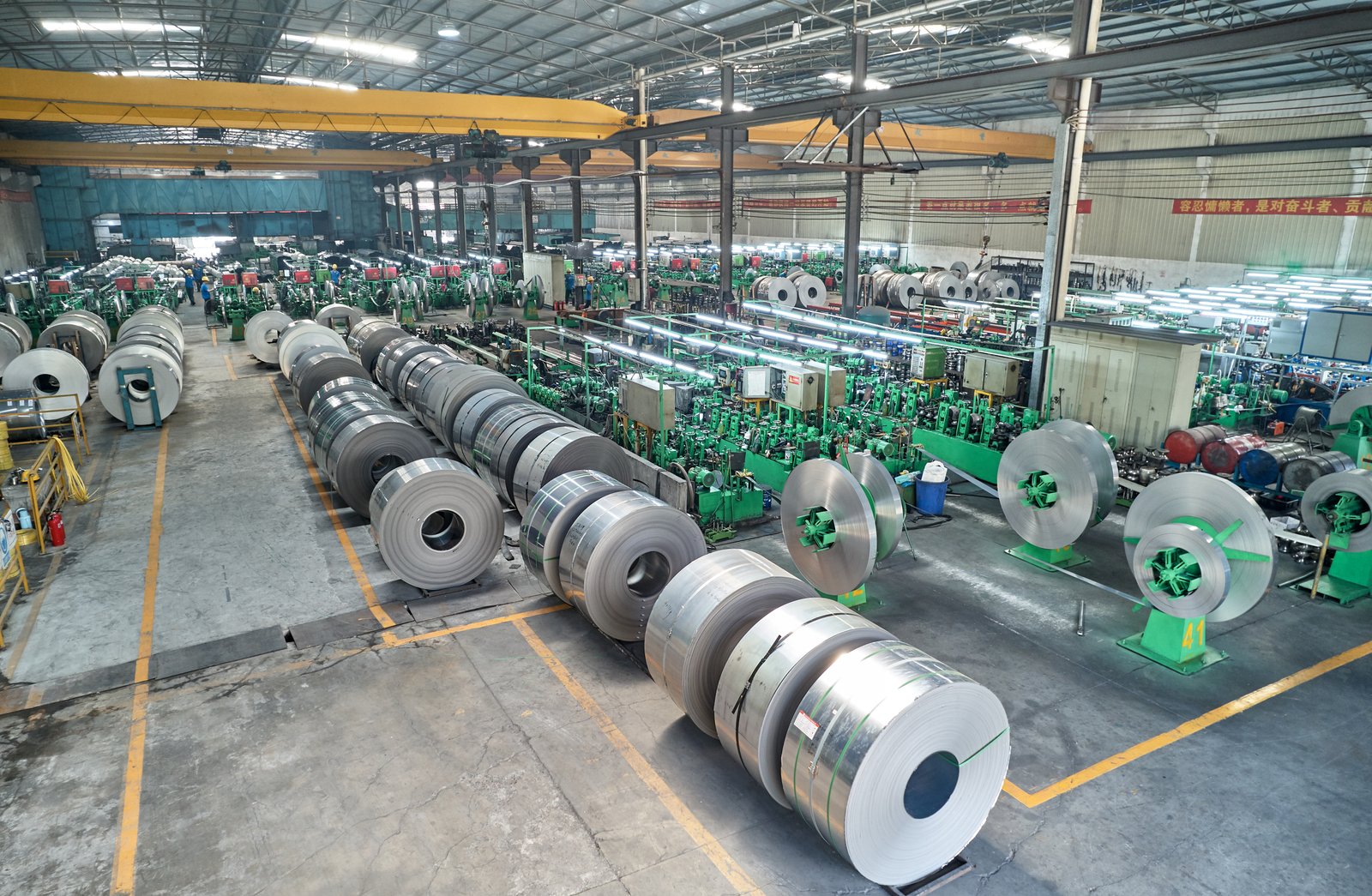
The suitability of marine-grade stainless steel for coastal projects stems from a carefully engineered balance of chemical composition and resulting mechanical properties, designed to combat the multifaceted challenges posed by marine environments. It's not just one single factor, but a combination of attributes that make these alloys exceptionally resilient. At MFY, we often guide clients through the selection process, emphasizing that "marine-grade" isn't a generic term but refers to specific alloys optimized for such conditions. For instance, a client involved in building a seawater intake system for an industrial plant in India faced severe corrosion issues with their previous piping. Switching to a carefully selected duplex stainless steel grade, based on our analysis of their specific water chemistry and flow conditions, dramatically extended the system's lifespan and reduced maintenance needs. This kind of targeted material selection, backed by a deep understanding of the underlying science, is what makes the difference. Let's explore the core reasons in more detail.
The Critical Role of Alloying Elements in Corrosion Resistance
The enhanced corrosion resistance of marine-grade stainless steels, most notably grades like 316L (UNS S316032) and duplex stainless steels such as 2205 (UNS S32205), is primarily attributed to their specific alloying elements. Chromium (Cr) is fundamental, as it forms a passive, tenacious, and self-repairing chromium-oxide (Cr₂O₃) layer on the steel's surface when exposed to oxygen. For a stainless steel to be considered "stainless," it typically requires a minimum of 10.5% chromium. Marine grades often contain 16-26% chromium, providing a more robust and stable passive film. This film acts as a barrier, significantly slowing down the corrosion process.
Molybdenum (Mo) is arguably the most crucial addition for marine environments. Typically present in amounts of 2-7% in marine grades (e.g., 316L contains 2-3% Mo, while super duplex grades can have up to 5%), molybdenum significantly enhances resistance to localized corrosion, particularly pitting and crevice corrosion, which are prevalent in chloride-rich environments like seawater. Molybdenum stabilizes the passive film and promotes its repassivation if damaged. The Pitting Resistance Equivalent Number (PREN), calculated as PREN = %Cr + 3.3 x %Mo + 16 x %N (or sometimes 30 x %N for duplex steels), is a common empirical measure used to predict the pitting corrosion resistance of stainless steels. Higher PREN values (typically >32 for seawater resistance, with duplex often >40) indicate better resistance. For instance, while a standard 304 stainless steel might have a PREN around 18-20, 316L typically has a PREN of 23-28, and duplex stainless steel 2205 boasts a PREN around 35, making them progressively more suitable for marine applications.
Nickel (Ni), present in austenitic grades like 316L (8-10.5%) and also a key component in duplex steels (4.5-6.5% in 2205), primarily acts as an austenite stabilizer. It also enhances general corrosion resistance, toughness, and weldability. While not as directly impactful on pitting resistance as molybdenum, nickel contributes to the overall robustness of the passive film and improves performance in reducing acid environments, which can sometimes be a factor in specific marine or industrial-coastal interface scenarios. The synergistic effect of these elements provides a formidable defense against the complex corrosive challenges encountered in coastal projects, ensuring the material's integrity over extended service periods. I recall a project with "AquaConstruct Engineering" for a coastal pipeline in a particularly aggressive tidal zone; the selection of a super austenitic grade with high Mo and Ni content, based on detailed water analysis, was key to their long-term success.
Superior Mechanical Properties for Harsh Coastal Environments
Beyond corrosion resistance, marine-grade stainless steel pipes offer excellent mechanical properties crucial for the demanding physical conditions of coastal environments. These environments often involve dynamic loads from waves and currents, potential impacts from debris, and stresses from installation and operation. Austenitic stainless steels like 316L are known for their good tensile strength (typically around 515-690 MPa or 75-100 ksi) and excellent ductility and toughness, even at low temperatures. This toughness makes them resistant to brittle fracture, which is a significant advantage in structures that might experience sudden impacts or fluctuating loads. Their formability and weldability also simplify fabrication and installation processes for complex piping systems.
Duplex stainless steels, such as 2205, offer an even more compelling combination of mechanical strength and corrosion resistance. With a microstructure comprising roughly equal proportions of austenite and ferrite, duplex steels typically exhibit yield strengths more than double that of common austenitic grades like 316L (e.g., 2205 has a minimum yield strength of about 450 MPa or 65 ksi, compared to around 205 MPa or 30 ksi for 316L). This higher strength allows for the design of thinner-walled pipes and components, leading to weight savings and potentially lower material costs, despite the higher per-kilogram price of the alloy. This was a critical factor for a client in the Middle East constructing an offshore observation platform; using duplex steel for structural pipework allowed them to reduce the overall weight of the structure, simplifying foundation requirements and installation logistics.
The inherent fatigue resistance of these stainless steels is also vital. Coastal structures and piping systems are often subjected to cyclic loading from tides, waves, and wind. Marine-grade stainless steels demonstrate good resistance to fatigue failure, ensuring long-term structural integrity. Furthermore, their abrasion resistance, while not as high as some specialized wear-resistant steels, is generally adequate for many coastal applications where suspended sand or silt might be present in the water, especially when flow velocities are managed. This combination of strength, toughness, and fatigue resistance ensures that pipes can withstand the physical rigors of the coastal zone, complementing their chemical resilience.
Long-Term Cost-Effectiveness and Sustainability Benefits
While the initial procurement cost of marine-grade stainless steel pipes can be higher than that of carbon steel or lower-grade stainless steels, their long-term cost-effectiveness is a significant advantage. This stems primarily from their extended service life and reduced maintenance requirements. Projects using marine-grade stainless steel experience fewer failures due to corrosion, leading to less downtime, lower repair costs, and minimized need for premature replacement. For instance, a study by the Nickel Institute often highlights the lifecycle cost advantages of using appropriate stainless steel grades in corrosive environments. Consider a coastal power plant's cooling water system; the cost of a shutdown due to pipe failure can run into hundreds of thousands, if not millions, of dollars per day. The reliability offered by 316L or duplex pipes in such a scenario far outweighs the initial material cost premium.
The durability of marine-grade stainless steel also contributes to lower inspection and maintenance budgets. The stable passive film reduces the need for frequent protective coatings or cathodic protection systems, although these can be used as supplementary measures in extremely aggressive conditions or for added peace of mind. I once worked with a municipal water authority managing a coastal wastewater outfall. Their old system, made of coated carbon steel, required constant monitoring and recoating. Switching to duplex stainless steel pipes drastically cut their maintenance expenditure and extended the inspection intervals, freeing up resources for other critical infrastructure needs.
Furthermore, stainless steel is a highly sustainable material. It is 100% recyclable without any degradation of its properties, and a significant percentage of new stainless steel production utilizes recycled scrap. This circular economy aspect reduces the environmental footprint associated with material production, conserving natural resources and lowering energy consumption compared to primary production. The longevity of stainless steel structures also means less frequent replacement, further reducing the environmental impact associated with manufacturing, transportation, and installation of new materials. This combination of economic and environmental benefits makes marine-grade stainless steel a prudent and responsible choice for forward-thinking coastal projects.
| Feature | Carbon Steel (Coated) | 304 Stainless Steel | 316L Stainless Steel | Duplex 2205 Steel |
|---|---|---|---|---|
| Initial Cost | Low | Moderate | Moderate-High | High |
| Corrosion Resist. | Poor (relies on coating) | Fair | Good | Excellent |
| Seawater Resist. | Very Poor | Poor | Good (Moderate Cl⁻) | Very Good |
| Pitting Resist. | Very Poor | Low | Moderate | High (PREN ~35) |
| Strength | Moderate | Moderate | Moderate | High |
| Maintenance | High (coating repair) | Moderate | Low | Very Low |
| Lifespan (Marine) | Short-Medium | Medium | Long | Very Long |
| Lifecycle Cost | High | Moderate-High | Moderate | Moderate-Low |
316L contains molybdenumTrue
316L stainless steel contains 2-3% molybdenum which enhances its resistance to chloride-induced pitting corrosion.
Duplex is weaker than 316LFalse
Duplex stainless steels have yield strengths more than double that of 316L, making them stronger, not weaker.
How are marine-grade stainless steel pipes currently used in coastal projects?
Facing diverse operational demands in coastal projects, from fluid transport to structural support? Subpar piping materials can lead to system failures, environmental risks, and costly interruptions. Marine-grade stainless steel pipes are extensively employed across a spectrum of applications, ensuring reliability and longevity where it matters most.
Marine-grade stainless steel pipes are vital in desalination plants for seawater intake and brine discharge, offshore oil and gas platforms for process piping, coastal power plants for cooling systems, and in constructing durable jetties, piers, and breakwaters due to their corrosion resistance.
The versatility of marine-grade stainless steel pipes makes them indispensable in a multitude of coastal applications, far beyond just simple water conveyance. At MFY, we've supplied these pipes for projects ranging from complex industrial processing facilities to public infrastructure that shapes our coastlines. For example, a major contractor working on a new bridge construction in a brackish estuary in Southeast Asia approached us for robust piling encasements and drainage systems. They needed materials that could withstand not only saltwater corrosion but also the abrasive action of sediment and tidal flows. Marine-grade stainless steel, specifically a duplex grade stainless steel3, provided the optimal balance of strength and corrosion resistance they required. The applications are truly diverse, reflecting the material's adaptability and proven performance. These pipes form the backbone of critical systems in desalination plants, ensuring clean water supply, and are integral to the structural integrity of offshore platforms extracting vital energy resources. They are also increasingly used in architectural applications where both durability and aesthetic appeal are important in coastal buildings and public spaces. Let's explore some of these key usage areas more thoroughly.
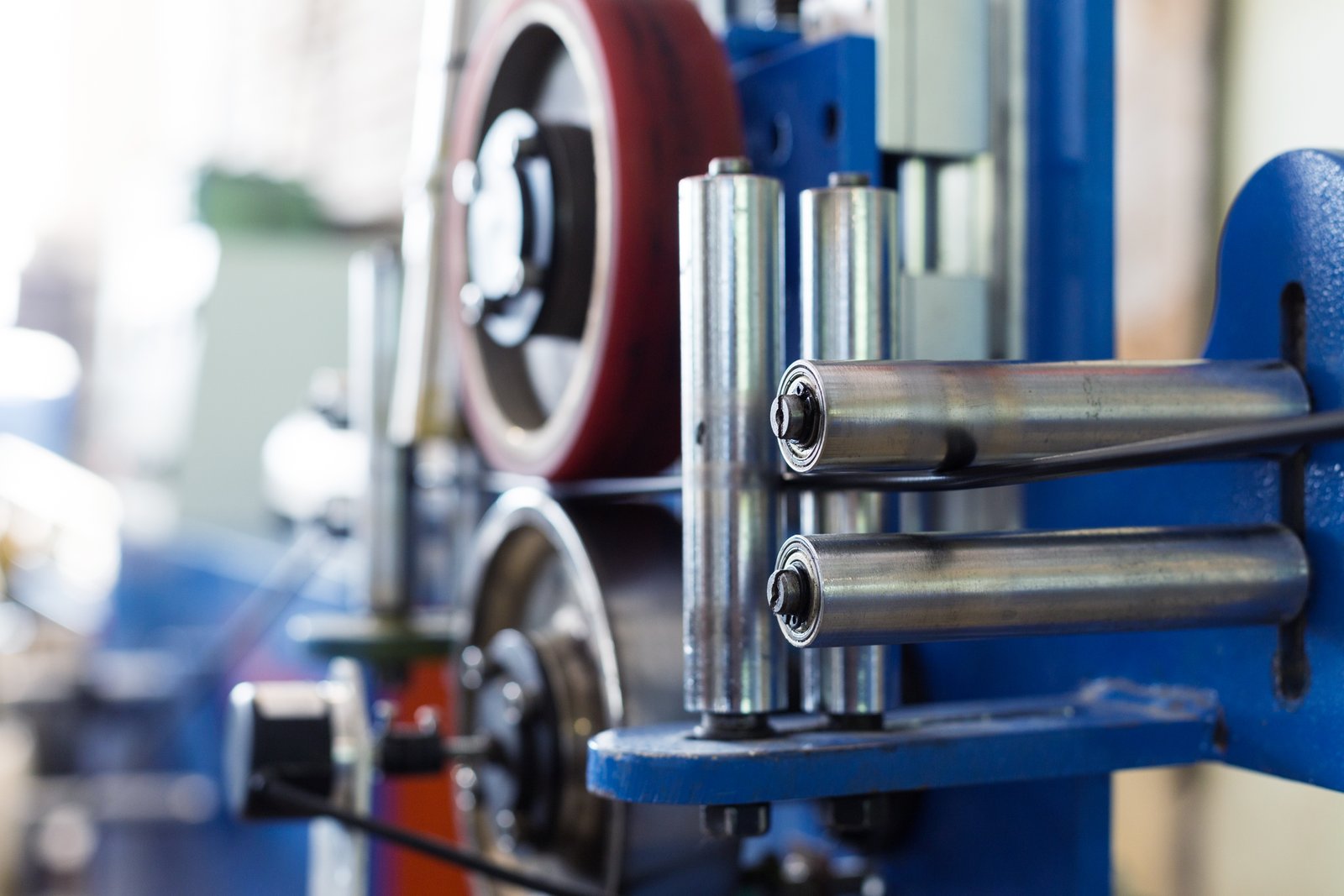
The adoption of marine-grade stainless steel pipes in coastal projects is widespread, driven by the material's unparalleled ability to withstand harsh saline environments while maintaining structural integrity and operational efficiency. Their application spans critical infrastructure, industrial processes, and even architectural enhancements. As Global Business Director at MFY, I've seen firsthand the innovative ways these pipes are integrated into projects designed for longevity. For instance, we recently collaborated with an engineering firm developing a sustainable aquaculture system in India4. They required piping for seawater circulation that was non-toxic to marine life, easy to clean to prevent biofouling buildup, and, most importantly, highly resistant to corrosion. Grade 316L stainless steel pipes proved to be the ideal solution, meeting all their stringent criteria and contributing to the project's overall sustainability goals. This is just one example of how the specific properties of marine-grade stainless steel enable progress in diverse coastal endeavors.
Structural Applications in Offshore Platforms and Jetties
Offshore oil and gas platforms, wind turbine foundations, and coastal jetties or piers are constantly exposed to the most aggressive marine conditions, including saltwater splash zones, submersion, and atmospheric salinity. Marine-grade stainless steel pipes, particularly duplex and super duplex grades, are extensively used for structural components in these applications. Their high strength-to-weight ratio allows for more slender designs compared to carbon steel, reducing overall structural weight and, consequently, the load on foundations. For example, riser pipes, which transport oil or gas from the seabed to the platform, often utilize duplex stainless steel due to the combination of internal corrosive fluids and external seawater exposure. Industry reports, such as those from NACE International5 (now AMPP), frequently detail case studies where duplex stainless steels have provided decades of service in such harsh conditions with minimal maintenance.
In jetty and pier construction, stainless steel pipes are used for piling, support structures, and handrailing. While concrete is also common, stainless steel reinforcement or even solid stainless steel piles are chosen in highly corrosive zones or where long, maintenance-free life is paramount. A project MFY was involved with for a ferry terminal in a tropical Asian port saw the client specify 316L stainless steel for all handrails and some critical support columns near the waterline. Their decision was based on a lifecycle cost analysis that showed significant savings over 30 years compared to galvanized steel, which would have required frequent repainting and eventual replacement in that aggressive, humid, and saline atmosphere. The higher initial investment was justified by the drastically reduced maintenance burden and enhanced safety and aesthetic appeal over the terminal's operational life.
Furthermore, the weldability and fabrication flexibility of stainless steel pipes allow for complex structural designs. They can be easily formed and joined to create intricate frameworks capable of withstanding significant dynamic loads from waves and wind. The inherent corrosion resistance eliminates the need for bulky and often environmentally sensitive coating systems that are mandatory for carbon steel, simplifying installation and reducing the risk of coating damage during handling or service, which can lead to premature localized corrosion.
Fluid Transportation in Desalination and Wastewater Treatment Plants
Desalination plants, which are becoming increasingly vital for freshwater supply in many coastal regions, rely heavily on marine-grade stainless steel pipes. These plants handle highly corrosive fluids, including raw seawater intake, brine concentrate discharge, and various chemical treatment stages. Austenitic grades like 316L and 904L, as well as duplex and super duplex stainless steels, are commonly specified. For instance, in Reverse Osmosis (RO) systems, high-pressure piping carrying seawater (often >60 bar) requires materials that can withstand both the pressure and the corrosive chloride environment. Super duplex stainless steels are often preferred here due to their excellent strength and superior resistance to pitting and crevice corrosion, as highlighted in guidelines from the International Desalination Association6 (IDA). We at MFY have supplied extensive piping systems made from SMO 254 (a super austenitic stainless steel) and various duplex grades to desalination projects in the Middle East, where reliability is absolutely critical.
Similarly, coastal wastewater treatment plants utilize marine-grade stainless steel pipes for outfalls that discharge treated effluent into the sea, as well as for internal process piping exposed to corrosive chemicals and saline wastewater. The longevity of stainless steel ensures the environmental integrity of these systems, preventing leaks of untreated or partially treated wastewater. Biofouling can be a concern in these applications, but the smoother surface finish achievable with stainless steel, compared to materials like concrete or coated carbon steel, can reduce the rate of fouling accumulation, and they are more amenable to cleaning processes. A client operating a large municipal wastewater plant in Southeast Asia replaced their failing concrete outfall pipe with a large-diameter duplex stainless steel pipe. The project, while challenging logistically, resulted in a far more durable and hydraulically efficient system, reducing pumping costs and environmental risks.
The selection of the specific grade depends on factors such as seawater temperature, salinity, pollution levels, and the concentration of chemicals like chlorine used for disinfection or biofouling control. For example, warmer seawater generally accelerates corrosion rates, necessitating higher-alloyed grades. Data from material suppliers and industry research consistently show that while 316L might be adequate for cooler, less saline waters, hotter, more concentrated brines often require duplex or even super austenitic/super duplex grades to ensure a long service life.
Architectural and Aesthetic Uses in Coastal Buildings and Infrastructure
Beyond purely industrial or structural roles, marine-grade stainless steel pipes are increasingly chosen for architectural applications in coastal buildings, public spaces, and infrastructure where both durability and aesthetics are important. The sleek, modern appearance of stainless steel, combined with its ability to resist unsightly rust staining and degradation, makes it a favored material for handrails, balustrades, lighting poles, canopies, and facade elements in seafront hotels, residential complexes, and public promenades. We worked with an architect designing a luxury beachfront resort in the Caribbean who specified polished 316L stainless steel tubing for all exterior railings and decorative features. Their primary concern was maintaining a pristine appearance despite constant salt spray and high humidity. The chosen material has delivered on this, requiring only periodic cleaning to retain its luster.
Stainless steel's resistance to corrosion ensures that architectural features maintain their intended look for many years, minimizing the need for repainting or replacement that would be common with less resistant materials. This is particularly important for public infrastructure where maintenance budgets are often constrained. For example, stainless steel lighting columns along a coastal highway or boardwalk will not only last longer but will also avoid the rusty streaks that can mar concrete pavements when carbon steel poles corrode.
The versatility in finishes available for stainless steel – from brushed to mirror-polished or even textured – allows architects to achieve specific visual effects while still benefiting from the material's inherent durability. Furthermore, its strength allows for more slender and elegant designs compared to bulkier alternatives. The integration of functional piping, such as for drainage or service conduits within architectural elements, can also be seamlessly achieved using marine-grade stainless steel, ensuring that even the hidden components are built to last in the harsh coastal environment. This dual benefit of performance and appearance is driving its adoption in high-value coastal developments globally.
| Application Area | Common Stainless Steel Grades Used | Key Benefits | MFY Project Example Insight |
|---|---|---|---|
| Offshore Structures (Oil/Gas/Wind) | Duplex (2205), Super Duplex (2507) | High strength, excellent corrosion/pitting resistance | Risers for a SE Asia platform demanding fatigue resistance |
| Desalination Plants | 316L, 904L, Duplex, Super Austenitic (SMO 254) | Resistance to high chloride, pressure, brine | High-pressure RO piping for a Middle East facility |
| Coastal Jetties & Piers | 316L, Duplex 2205 | Longevity, low maintenance, structural integrity | Piling and handrails for an Indian port, lifecycle cost driven |
| Wastewater Outfalls | Duplex, Super Austenitic | Resistance to corrosive effluent, biofouling | Large-diameter outfall pipe replacing concrete in SE Asia |
| Architectural Features (Coastal) | 316/316L (polished/brushed) | Aesthetic appeal, low maintenance, corrosion resistance | Balustrades for a Caribbean resort, pristine appearance |
| Seawater Intake/Cooling Systems | 316L, Duplex | Resistance to seawater, biofouling control | Cooling system for a power plant in India, reliability focus |
Duplex stainless steel resists pitting corrosionTrue
Duplex grades like 2205 and 2507 contain high chromium and molybdenum content that provides superior resistance to pitting in chloride environments.
316L is suitable for hot brine dischargeFalse
While 316L works for cooler seawater, hot concentrated brines typically require higher-alloyed grades like super duplex or super austenitic stainless steels.
What challenges do coastal projects face with marine conditions when using steel pipes?
Are you concerned that even specialized steel pipes might succumb to the extreme conditions of coastal environments? Indeed, the relentless assault of saltwater, marine life, and dynamic forces can pose significant threats. Understanding these specific challenges is the first step towards ensuring long-term structural integrity.
Coastal projects using steel pipes face severe challenges including chloride-induced pitting and crevice corrosion from saltwater, biofouling which can impede flow and cause microbiologically influenced corrosion (MIC), and mechanical damage from erosion, abrasion by sand, and wave-induced fatigue.
While marine-grade stainless steels offer vastly superior performance compared to carbon steel or lower-alloyed grades, they are not entirely immune to the aggressive nature of marine environments if improperly selected or applied. At MFY, we believe in a proactive approach, which means thoroughly understanding the potential failure modes. I recall a client who, prior to consulting us, had used a standard stainless steel grade for a seawater cooling system in a tropical location, assuming "stainless" meant "invincible." They soon faced severe pitting corrosion issues. This experience underscores that even robust materials have their limits and require careful consideration of the specific environmental variables. The challenges are multifaceted, ranging from electrochemical corrosion accelerated by high chloride concentrations to physical degradation caused by wave action and abrasive particles. Furthermore, the very nature of marine ecosystems can introduce biological factors that influence corrosion. A comprehensive appreciation of these potential pitfalls is crucial for engineers and project managers to design and implement truly resilient coastal infrastructure. We need to look beyond just general corrosion and consider localized attacks, biological influences, and mechanical stresses.
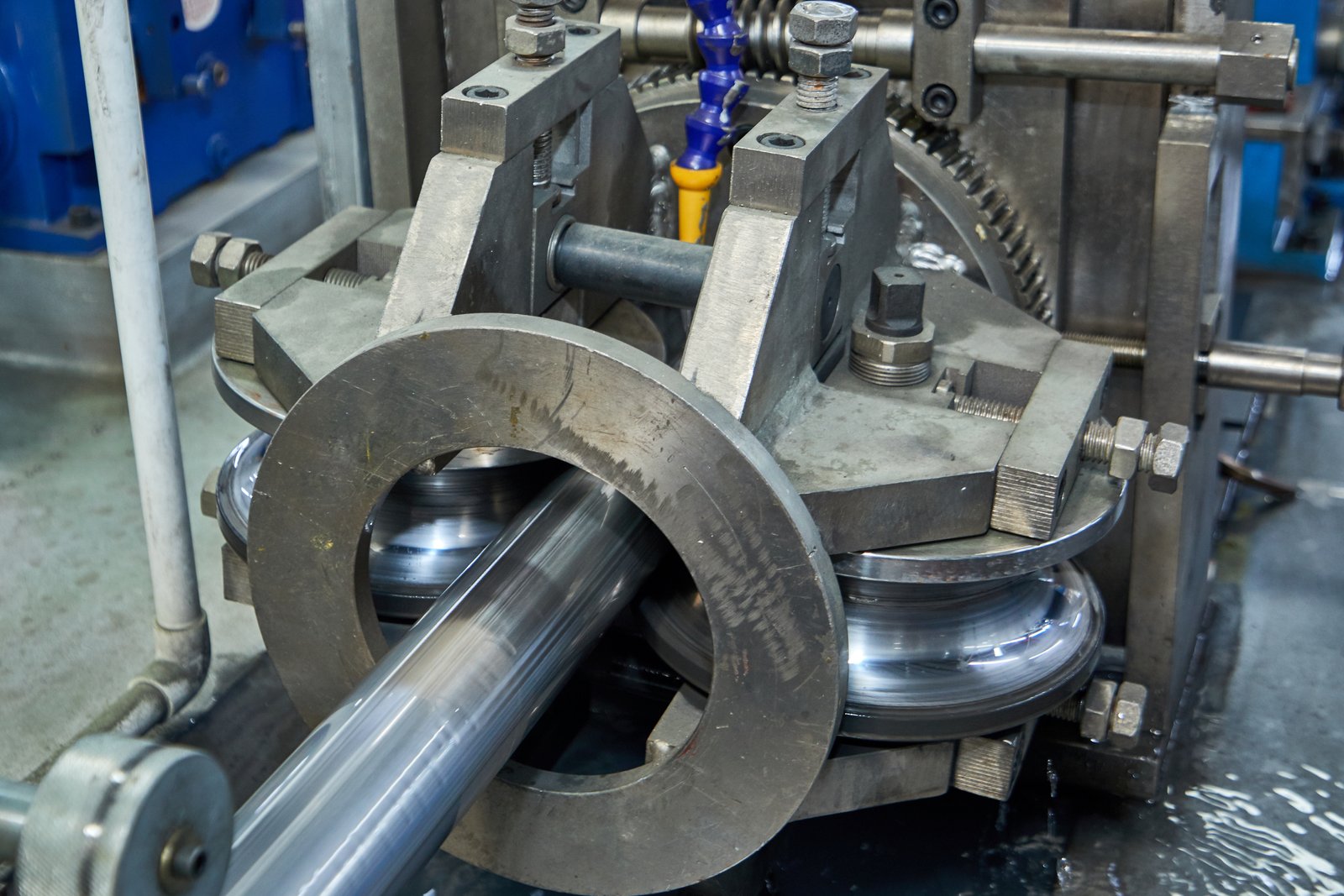
The allure of the coast for development and industry comes with a formidable set of environmental challenges that can significantly impact the longevity and reliability of steel piping systems. Even when marine-grade stainless steels7 are employed, a nuanced understanding of the specific threats is essential for successful project outcomes. From my experience at MFY, overlooking these complexities can lead to unexpected failures and costly remediation. For instance, a project involving subsea pipelines for a coastal resort in Southeast Asia encountered issues not just from simple saltwater corrosion, but from complex interactions at the pipe-sediment interface, leading to accelerated localized attack. This highlighted the need to consider the microenvironment, not just the bulk water chemistry. The marine environment is a dynamic and aggressive system, and steel pipes within it are subjected to a synergistic combination of chemical, biological, and mechanical stressors.
The Pervasive Threat of Chloride-Induced Corrosion (Pitting and Crevice)
The most significant challenge for any steel in a marine environment is corrosion, specifically forms exacerbated by the high concentration of chloride ions (Cl⁻) in seawater. While the chromium-rich passive layer on stainless steel provides general protection, chloride ions can locally break down this film, leading to highly localized and often rapid forms of corrosion known as pitting and crevice corrosion8. Pitting corrosion results in small, deep cavities that can penetrate the pipe wall, leading to leaks or even catastrophic failure, often with little visible surface degradation. I remember a case with "AquaConstruct Engineering" where 304 stainless steel fasteners, mistakenly used with 316L pipes in a seawater application, failed rapidly due to pitting, underscoring the critical nature of correct material selection for all components. The PREN (Pitting Resistance Equivalent Number) value is a key indicator here; materials with PREN < 32 are generally considered susceptible in seawater.
Crevice corrosion is another insidious form that occurs in stagnant, shielded areas such as under deposits, gaskets, bolt heads, or within flanged joints where seawater can become trapped. Within these crevices, oxygen depletion and an increase in chloride concentration and acidity create a highly aggressive local environment that can rapidly corrode even seemingly resistant alloys. For example, industry data shows that seawater containing 20,000 ppm chlorides at ambient temperatures can initiate crevice corrosion in 316L stainless steel if tight crevices are present. Therefore, design considerations that minimize crevices or ensure they are properly sealed or flushed are critical. We often advise clients at MFY on design modifications to avoid such geometries or recommend higher-alloyed materials like duplex or super austenitic steels (e.g., SMO 254 with PREN > 40) for critical applications where crevices are unavoidable.
The severity of chloride-induced corrosion is further influenced by factors such as temperature (higher temperatures generally accelerate corrosion), pH, oxygen availability, and the presence of oxidizing agents. Polluted coastal waters may contain sulfides or other contaminants that can exacerbate these corrosion mechanisms. Understanding these interactions is vital; for instance, stagnant seawater conditions, often found in intermittently used pipelines, can be far more corrosive than flowing seawater due to oxygen depletion and concentration cell formation.
Combating Biofouling and Microbiologically Influenced Corrosion (MIC)
Marine environments are teeming with life, and the surfaces of submerged steel pipes provide an ideal substrate for the attachment and growth of marine organisms – a phenomenon known as biofouling. This can range from microbial slime layers (microfouling) to the attachment of larger organisms like barnacles, mussels, and algae (macrofouling). Biofouling presents several challenges: it can restrict flow in pipes, increasing pumping costs and reducing system efficiency; it can add significant weight to structures; and, crucially, it can lead to Microbiologically Influenced Corrosion (MIC). MIC occurs when microorganisms, such as sulfate-reducing bacteria (SRB), acid-producing bacteria (APB), or metal-oxidizing bacteria, colonize the pipe surface, often beneath biofouling deposits. These microbes can alter the local electrochemical conditions at the metal surface, producing corrosive byproducts (like hydrogen sulfide from SRBs) or consuming protective passive layers, leading to severe localized corrosion that can be difficult to detect and mitigate.
I recall a client operating a coastal power plant who experienced unexpected internal pitting in their 316L seawater cooling pipes. Investigation revealed extensive MIC under slime deposits, facilitated by intermittent chlorination that wasn't fully effective against established biofilms. This highlights the complexity of MIC, as it's not just about the bulk water chemistry but the microenvironment created by the biological community. According to research published in journals like Corrosion Science, SRBs are a major culprit in anaerobic conditions, leading to rapid pitting. Effective biofouling control strategies, such as appropriate biocide treatment, regular mechanical cleaning, or the use of materials with inherent antifouling properties (though stainless steels themselves are not strongly antifouling), are essential. Some higher alloyed stainless steels or copper-nickel alloys show better resistance to biofouling attachment or its corrosive consequences.
The interplay between biofouling and crevice corrosion is also significant. The deposits formed by marine organisms can create occluded cells, effectively forming crevices where MIC and aggressive chemical corrosion can thrive. Therefore, managing biofouling is not just an operational efficiency issue but a critical aspect of corrosion control for steel pipes in marine service.
Mechanical Stresses: Erosion, Abrasion, and Fatigue in Dynamic Coastal Zones
Coastal projects are often located in physically dynamic zones, subjecting steel pipes to various mechanical stresses that can compromise their integrity. Erosion-corrosion can occur in pipes carrying seawater with suspended solids like sand or silt, particularly at high flow velocities or where there are changes in flow direction (e.g., bends, elbows). The mechanical action of these particles can strip away the protective passive film on the stainless steel, exposing fresh metal to the corrosive environment and leading to accelerated material loss. While stainless steels generally have good resistance to pure erosion, the synergistic effect of erosion and corrosion can be significant. We advised a dredging company to use thicker-walled pipes with hardened surfaces for their slurry transport lines after they experienced rapid wear on standard pipes.
Abrasion from moving seabed sediments, ice (in colder climates), or debris carried by strong currents and waves can also damage external pipe surfaces or protective coatings (if any). This is particularly relevant for subsea pipelines or structures like jetty piles. Once the surface is damaged, corrosion can initiate and propagate more easily. Careful route selection for pipelines to avoid areas of high sediment mobility, or the use of concrete weight coatings or rock dumping for protection, are common mitigation strategies.
Fatigue is another major concern, especially for structures exposed to cyclic loading from waves, tides, or vessel movements (e.g., risers, mooring systems, jetty components). Constant flexing and stress variations can lead to fatigue crack initiation and propagation, even at stress levels below the material's yield strength. The presence of a corrosive environment can further accelerate fatigue crack growth, a phenomenon known as corrosion fatigue. Duplex stainless steels, with their higher strength and good fatigue resistance, are often favored in such applications. Detailed fatigue analysis, considering both mechanical loads and environmental effects, is crucial in the design phase for any dynamically loaded coastal steel structure.
| Challenge Type | Specific Manifestation | Common Stainless Steels Affected | Influencing Factors | Typical Consequence |
|---|---|---|---|---|
| Chloride Corrosion | Pitting | 304, 316L (especially at >25°C) | Chloride conc., temperature, O₂, pH, PREN value | Leaks, wall penetration |
| Crevice Corrosion | 304, 316L, even Duplex if severe | Tight crevices, stagnant conditions, deposits | Rapid localized failure | |
| Biological Issues | Biofouling (Micro & Macro) | All grades to varying degrees | Nutrient levels, temperature, light, flow rate | Flow restriction, MIC sites |
| MIC (e.g., by SRBs, APBs) | All grades, esp. under deposits | Anaerobic conditions, biofilms, presence of specific microbes | Severe localized pitting | |
| Mechanical Damage | Erosion-Corrosion | All grades, esp. at high velocity | Flow velocity, particle hardness & conc., fluid angle | Wall thinning, leaks |
| Abrasion | All grades | Sediment movement, debris impact, ice | Surface damage, coating loss | |
| Fatigue / Corrosion Fatigue | All grades, esp. lower strength | Cyclic loads (waves, tides), corrosive environment | Crack propagation, fracture |
Chlorides cause pitting corrosionTrue
High chloride concentrations in seawater can locally break down stainless steel's protective passive layer, leading to deep, localized pits.
Stainless steel is invincible in seawaterFalse
Even marine-grade stainless steels require proper selection and design considerations to withstand seawater's aggressive conditions.
What solutions can overcome the challenges of using stainless steel in coastal environments?
Concerned that the harsh marine environment might still compromise your stainless steel pipes? While challenges exist, they are not insurmountable. Proactive strategies and advanced material choices can ensure the long-term integrity and performance of your coastal projects, transforming potential vulnerabilities into resilient strengths.
Solutions include selecting higher-alloyed stainless steels (duplex, super duplex, super austenitic)with greater PREN values, applying protective coatings or surface treatments, implementing cathodic protection, and employing designs that minimize crevices and facilitate proper drainage and cleaning to mitigate corrosion risks effectively.
Overcoming the multifaceted challenges posed by coastal environments requires a strategic and informed approach to material selection, design, and protection. At MFY, we've guided numerous clients through this process, ensuring their stainless steel piping systems deliver optimal performance and longevity. For instance, a client developing a tidal energy project faced extreme conditions – high velocity saline water, abrasive sediments, and significant biofouling potential. A standard marine grade wouldn't suffice. We worked with them to specify a super duplex stainless steel for critical components, coupled with specific design features to reduce turbulence and allow for easier inspection. This kind of tailored solution is key. It’s not just about picking a material from a catalogue; it's about understanding the specific interplay of environmental factors and operational demands. From leveraging advanced alloys with superior corrosion resistance to implementing complementary protective measures and intelligent design practices, a robust defense can be mounted against the sea's relentless forces. Exploring these solutions in detail will provide a clearer roadmap for safeguarding your coastal investments.
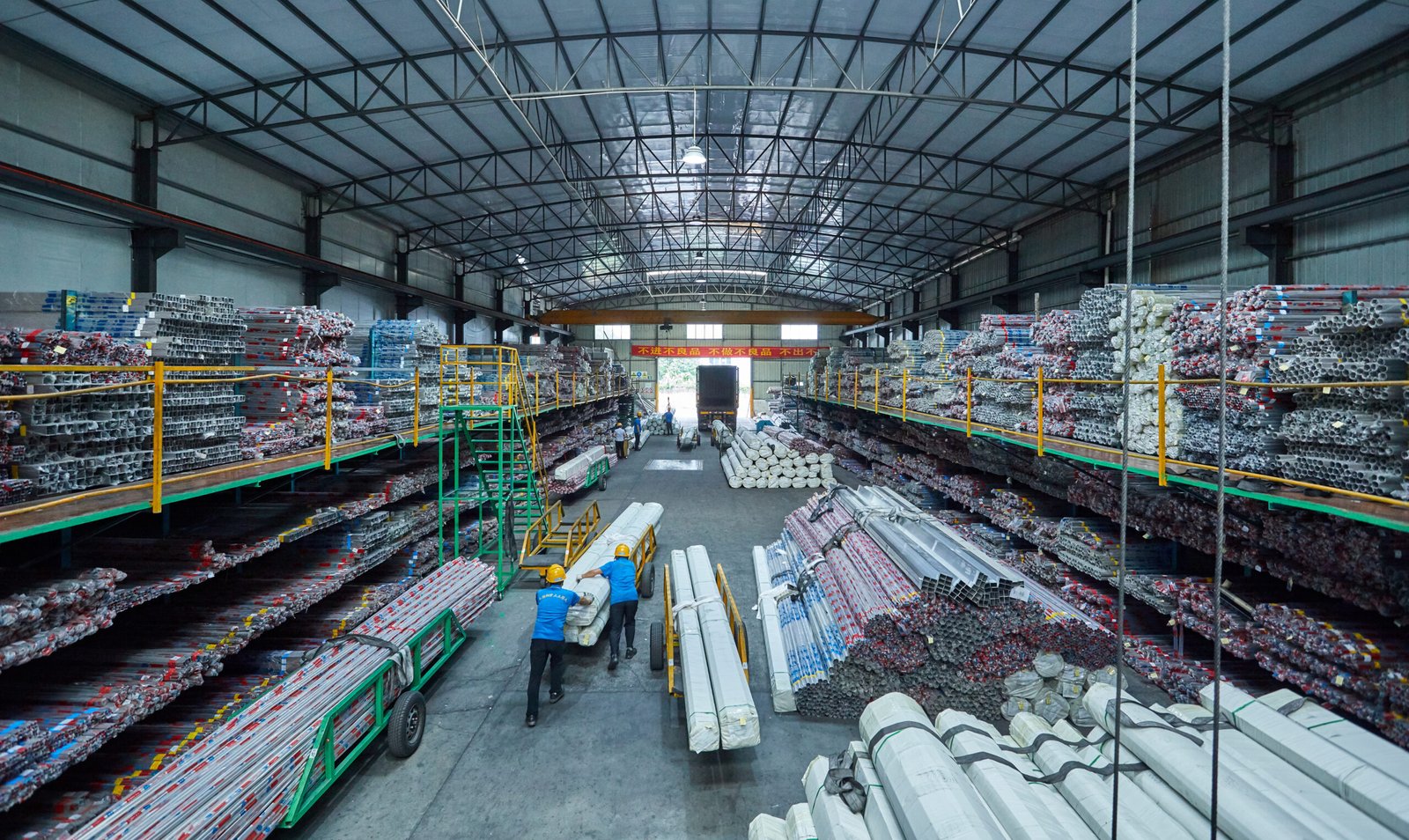
Successfully deploying stainless steel pipes in aggressive coastal environments hinges on a multi-pronged strategy that addresses the specific threats of corrosion, biofouling, and mechanical damage. It's rarely a single "silver bullet" solution; rather, it's an integrated approach. As a representative of MFY, I’ve seen projects thrive when a holistic view is taken from the outset. Consider a recent engagement with an engineering firm designing a seawater intake for a new resort complex in the Middle East. The warm, highly saline waters presented a significant corrosion challenge. Instead of just defaulting to 316L stainless steel[9], we conducted a thorough risk assessment, which led to the recommendation of a duplex stainless steel for the main piping, combined with a carefully planned cathodic protection system for added security at flanged connections and support structures. This thoughtful combination ensured both material resilience and system integrity. Let's delve into the specific categories of solutions available.
Advanced Material Selection: Beyond Standard Marine Grades
While 316L stainless steel (PREN ~23-28) is often termed "marine grade" and performs well in many temperate coastal applications, more aggressive environments necessitate the use of higher-alloyed stainless steels. The key is to match the material's Pitting Resistance Equivalent Number (PREN = %Cr + 3.3x%Mo + 16x%N) and other properties to the severity of the service conditions, particularly chloride concentration and temperature. For instance, in warm tropical seawaters (above 25-30°C) or in applications involving concentrated brines (like desalination plant discharge), 316L may be prone to pitting and crevice corrosion. In such cases, duplex stainless steels like 2205 (PREN ~35) offer a significant step up in corrosion resistance and nearly double the yield strength of 316L, allowing for material savings. I recall a client in India who initially specified 316L for a chemical processing plant's seawater cooling system; after our review of the high operating temperatures and local water chemistry, we recommended upgrading to Duplex 2205, which successfully prevented the premature failures they had experienced in a similar, older facility.
For even more demanding applications, such as those involving very high chloride levels, elevated temperatures, or critical components where failure is not an option, super duplex stainless steels like 2507 (UNS S32750, PREN >40) or Zeron 100 (UNS S32760, PREN >40) are excellent choices. These alloys contain higher levels of chromium, molybdenum, and nitrogen, providing exceptional resistance to localized corrosion. Super austenitic stainless steels, such as 6Mo grades like SMO 254 (UNS S31254, PREN >42) or AL-6XN (UNS N08367, PREN >45), also offer outstanding performance in aggressive seawater and crevice-forming conditions due to their very high molybdenum (6-7%) and nitrogen content. For example, SMO 254 is extensively used in brackish water reverse osmosis (BWRO) and seawater reverse osmosis (SWRO) desalination plants. We at MFY have supplied these specialized grades for critical heat exchanger tubing and piping in such environments where 316L would simply not suffice.
In some extreme cases, where even super duplex or super austenitic steels might reach their limits, or where specific chemical compatibilities are required, other corrosion-resistant alloys (CRAs) like nickel-based alloys (e.g., Alloy C276)[10] or titanium might be considered, though these typically come at a significantly higher cost. The decision process involves a careful technical and economic evaluation, weighing the upfront material cost against the expected service life, maintenance requirements, and the consequences of failure.
Surface Treatments and Protective Coatings for Enhanced Durability
Even with appropriately selected stainless steel grades, certain surface treatments or, in some specific cases, protective coatings can further enhance performance and longevity in coastal environments. Passivation is a standard and crucial post-fabrication treatment for stainless steels. This chemical process (typically involving nitric acid or citric acid solutions) removes free iron and other contaminants from the surface and helps to thicken and optimize the natural chromium-oxide passive layer, maximizing its corrosion resistance. At MFY, we always emphasize the importance of proper passivation, especially after welding or any mechanical work that might disturb the passive film. Insufficient passivation can leave the steel vulnerable to premature corrosion, even if the correct alloy was chosen.
Electropolishing is another surface treatment that can be beneficial. It electrochemically removes a microscopic layer of material, resulting in an extremely smooth, clean, and often more corrosion-resistant surface. The enhanced smoothness can also reduce biofouling attachment and make cleaning easier. This is particularly useful for sanitary applications or where a highly aesthetic and durable finish is required in a marine setting. We've seen clients opt for electropolished 316L for architectural elements near the sea to maintain a pristine look with minimal cleaning.
While stainless steels are generally used uncoated due to their inherent corrosion resistance, in some niche or extremely aggressive scenarios (e.g., the splash zone for carbon steel structures with stainless steel components, or for specific wear resistance needs), specialized coatings might be considered. However, coating stainless steel needs careful consideration, as a damaged coating can sometimes lead to localized corrosion cells if the substrate is exposed. More commonly, for duplex or super duplex components, treatments like pickling (to remove weld scale) followed by passivation are the primary surface conditioning steps. For critical connections or areas prone to crevice corrosion, sometimes flexible sealants or protective wraps are used to isolate the stainless steel from the aggressive microenvironment.
Design Considerations and Maintenance Practices for Longevity
Intelligent design and diligent maintenance are as crucial as material selection in ensuring the long-term performance of stainless steel pipes in coastal projects. Design practices should aim to minimize opportunities for localized corrosion. This includes avoiding or sealing crevices wherever possible, ensuring good drainage to prevent stagnant water accumulation, and designing for smooth flow to reduce turbulence and erosion-corrosion potential. For instance, specifying butt welds with smooth internal profiles over socket welds or threaded connections in critical seawater lines can significantly reduce crevice corrosion risks. I always advise clients like "AquaConstruct Engineering" to pay close attention to joint design and to ensure that dissimilar metals are electrically isolated if used in close proximity in seawater to prevent galvanic corrosion.
Regular inspection and maintenance are also paramount. This includes visual inspections for signs of corrosion, deposits, or biofouling. Non-destructive testing (NDT) methods like ultrasonic testing (UT) for wall thickness or dye penetrant testing (PT) for surface cracks can be employed periodically. A well-planned maintenance regime might include routine cleaning to remove biofouling and other deposits, which not only maintains operational efficiency (e.g., flow rates) but also eliminates potential sites for under-deposit corrosion and MIC. The frequency and type of cleaning (e.g., mechanical pigging, high-pressure water jetting, or controlled chemical cleaning) will depend on the application and the rate of fouling.
Furthermore, monitoring environmental conditions (e.g., seawater chemistry, temperature) can provide early warnings if conditions become more aggressive than initially anticipated, allowing for proactive adjustments to maintenance or operational strategies. Implementing a comprehensive asset integrity management program that incorporates these design, inspection, and maintenance principles is the best way to maximize the service life of stainless steel piping systems in the challenging but manageable coastal environment. This holistic approach ensures that the inherent benefits of stainless steel are fully realized.
| Solution Category | Specific Strategy | Target Challenge(s) Addressed | Example of Application |
|---|---|---|---|
| Advanced Material Selection | Use Duplex (e.g., 2205) / Super Duplex (e.g., 2507) | Pitting, crevice corrosion, SCC, high mechanical loads | Seawater RO plants, offshore oil/gas piping |
| Use Super Austenitic (e.g., SMO 254, AL-6XN) | Severe pitting/crevice corrosion, warm seawater | Desalination brine lines, heat exchangers | |
| Surface Treatments | Passivation (Nitric/Citric Acid) | Optimizes passive layer, removes free iron, general corrosion | Standard for all SS post-fabrication |
| Electropolishing | Enhances smoothness, cleanability, corrosion resistance | Architectural SS, sanitary piping, biofouling reduction | |
| Protective Measures | Cathodic Protection (Impressed Current/Sacrificial Anodes) | Galvanic corrosion, supplementary for critical areas | Protecting SS in contact with less noble metals, complex structures |
| Specialized Coatings/Wraps (less common for SS) | Extreme splash zones, specific abrasion resistance | Protecting weld joints in highly aggressive microenvironments | |
| Design Practices | Minimize/Seal Crevices (e.g., butt welds) | Crevice corrosion | Pipe joints, flange connections |
| Ensure Good Drainage | Stagnant water corrosion, deposit formation | Horizontal pipe runs, tank bottoms | |
| Maintenance | Regular Inspection (Visual, NDT) | Early detection of corrosion, damage, fouling | All critical piping systems |
| Routine Cleaning (Mechanical, Chemical) | Biofouling, MIC, under-deposit corrosion | Seawater intake lines, cooling systems |
Duplex stainless steels have higher PREN than 316LTrue
Duplex grades like 2205 (PREN ~35) significantly outperform 316L (PREN ~23-28) in chloride resistance due to higher chromium, molybdenum and nitrogen content.
Stainless steel never needs coatingsFalse
While typically used uncoated, specialized coatings may be applied in extreme splash zones or for wear resistance, though this requires careful implementation to avoid creating corrosion cells.
What technical recommendations can enhance the performance of stainless steel pipes in coastal applications?
Aiming for peak performance from your stainless steel pipes in demanding coastal settings? Simply choosing a marine grade isn't always enough. Specific technical considerations during design, fabrication, and operation can significantly amplify their durability and lifespan, ensuring your project withstands the test of time and tide.
Enhance performance by precisely selecting grades based on PREN values for specific chloride levels and temperatures, adhering to correct welding procedures (e.g., using matching or over-alloyed fillers, inert gas purging), ensuring thorough post-weld cleaning and passivation, and implementing regular condition monitoring.
To truly maximize the service life and reliability of stainless steel pipes in coastal projects, a meticulous approach to several technical aspects is essential. It's about moving beyond general guidelines to specific, actionable recommendations. At MFY, we often find that issues arise not from the inherent quality of the stainless steel itself, but from oversights in specification, fabrication, or installation. For example, a contractor once faced premature weld failures in a 316L pipeline. The root cause? They used a lower-grade filler metal and inadequate gas shielding during welding, which compromised the corrosion resistance of the weld zone. This scenario highlights how crucial adherence to technical best practices is. These recommendations span the entire lifecycle of the piping system, from the initial design and material selection phase through to fabrication, installation, and ongoing operational maintenance. By focusing on these critical details, we can significantly bolster the inherent advantages of stainless steel, ensuring it performs optimally even in the most challenging marine conditions. Let's explore these technical nuances.

Ensuring the optimal, long-term performance of stainless steel pipes in corrosive coastal environments goes beyond just selecting a "marine-grade" alloy. It requires a diligent application of technical expertise throughout the project lifecycle. From my vantage point at MFY, I’ve seen how attention to detail in areas like precise grade specification, fabrication quality control, and proactive maintenance can make the difference between a system that merely survives and one that thrives for decades. For instance, a client involved in constructing a critical seawater intake for a power plant in India initially focused only on the pipe material itself. We collaborated with their engineering team to develop a comprehensive technical specification that covered everything from weld procedures and NDT requirements to handling protocols and passivation, significantly enhancing their confidence in the system's longevity. These technical underpinnings are vital for unlocking the full potential of stainless steel.
Precision in Grade Selection Based on Environmental Severity
The cornerstone of long-term performance is the precise selection of the stainless steel grade, meticulously matched to the specific environmental conditions it will encounter. This involves a detailed assessment of factors like seawater temperature, chloride concentration, pH, oxygen levels, presence of pollutants (e.g., sulfides), and the potential for biofouling or MIC. The Pitting Resistance Equivalent Number (PREN = %Cr + 3.3x%Mo + 16x%N) is a fundamental starting point. Generally, for permanent seawater immersion:
- PREN < 32: Susceptible to pitting and crevice corrosion (e.g., 304, sometimes 316L in warmer or stagnant conditions).
- PREN 32-40: Often suitable for many seawater applications, especially duplex grades like 2205 (PREN ~35). 316L (PREN ~23-28) may be borderline and its use needs careful evaluation of temperature and crevice risk. I've seen 316L perform well in cooler North Sea applications but struggle in warmer waters of the Middle East without additional protective measures or design considerations.
- PREN > 40: Preferred for aggressive seawater conditions, including higher temperatures, high chloride concentrations, or situations where crevice corrosion is a major risk. This includes super duplex (e.g., 2507, Zeron 100) and 6Mo super austenitic stainless steels (e.g., SMO 254, AL-6XN).
It's not just about PREN. For example, if stress corrosion cracking (SCC) is a concern (e.g., in environments with elevated temperatures and chlorides), duplex stainless steels generally offer superior SCC resistance compared to standard austenitic grades like 304 or 316, though 6Mo austenitics also perform well. The design life of the project and the client's tolerance for risk and maintenance also play into this decision. At MFY, we often use proprietary databases and consult industry standards like NACE MR0175/ISO 15156 (for oil and gas sour service) or DNVGL-RP-B201 (for offshore structures) to guide these critical selection decisions, ensuring the chosen grade provides a robust safety margin.
Best Practices in Fabrication, Welding, and Installation
The corrosion resistance of a stainless steel piping system can be significantly compromised by improper fabrication, welding, or installation practices. Welding is a particularly critical area. It's essential to use welding consumables (filler metals) that are either matching or, preferably, slightly over-alloyed compared to the base material to ensure the weld zone maintains adequate corrosion resistance. For example, when welding 316L, a 316LMo filler or a higher alloy might be specified. Inadequate weld penetration, undercut, or excessive reinforcement can create stress concentrators and crevices, becoming initiation sites for corrosion. A case I recall involved a client experiencing leaks near welds in a 316L system; investigation showed they had used 308L filler (suitable for 304L, but under-alloyed for 316L in marine service), leading to preferential corrosion of the weld.
Effective inert gas shielding (e.g., argon purging) on both the torch side and the root side (back purging) during TIG welding is crucial to prevent oxidation and nitrogen loss, which can reduce the corrosion resistance and mechanical properties of the weld, especially for duplex and super austenitic steels. Post-weld cleaning is equally important. All weld scale (heat tint), spatter, and slag must be thoroughly removed, typically by mechanical means (e.g., grinding with dedicated stainless steel tools, brushing with stainless steel brushes) followed by chemical pickling and passivation. Contamination with carbon steel particles (e.g., from tools, grinding dust, or storage near carbon steel) is a common cause of premature rusting and must be strictly avoided throughout fabrication and installation. MFY always stresses the importance of dedicated workshops or segregated areas for stainless steel fabrication to prevent such cross-contamination.
Handling and installation must also be done carefully to avoid scratches, dents, or other mechanical damage that could disrupt the passive film or create sites for localized corrosion. Proper support spacing for pipelines prevents sagging and stress concentration, while careful alignment before welding minimizes residual stresses.
Implementing a Proactive Monitoring and Maintenance Regime
Even with the best materials and fabrication, a proactive monitoring and maintenance regime is essential for ensuring long-term performance, especially in critical applications. This starts with comprehensive baseline inspections after installation to document the initial condition of the piping system. Subsequent periodic inspections should be scheduled based on the aggressiveness of the environment, the criticality of the system, and operational experience. Visual inspection is the first line of defense, looking for any signs of leaks, corrosion, deposits, or biofouling.
Non-destructive testing (NDT) techniques play a vital role. Ultrasonic thickness gauging can monitor for general wall loss or localized thinning. Dye penetrant or magnetic particle (for ferritic phases in duplex) testing can identify surface-breaking cracks. Eddy current testing can be useful for inspecting tubing, particularly in heat exchangers. For internal inspection of pipelines, intelligent pigging or remote visual inspection (RVI) with borescopes or robotic crawlers can provide valuable data. I worked with a desalination plant operator who implemented a biannual RVI program for their main seawater intake lines; this allowed them to detect early-stage biofouling and localized pitting, enabling targeted cleaning and repairs before any significant issues arose.
A well-defined cleaning schedule is crucial, especially where biofouling is prevalent. This might involve mechanical cleaning (e.g., pigging, water jetting) or, in some cases, carefully controlled chemical cleaning. Any maintenance activities, particularly those involving welding or grinding, must be followed by proper cleaning, pickling (if necessary), and passivation to restore the passive layer. Keeping detailed records of all inspections, maintenance activities, and any observed issues helps in identifying trends, optimizing maintenance intervals, and making informed decisions about future repairs or replacements. This data-driven approach is key to managing the asset effectively over its entire lifecycle.
| Technical Aspect | Recommendation | Rationale | Consequence of Non-Compliance |
|---|---|---|---|
| Grade Selection | Specify based on PREN, temperature, chloride levels, SCC risk, specific pollutants | Match material capability to environmental aggressiveness | Premature failure (pitting, crevice, SCC), reduced lifespan |
| Consider Duplex/Super Duplex for high strength & PREN >40 for severe conditions | Enhanced resistance to localized corrosion and mechanical loads | Unexpected corrosion in demanding applications | |
| Welding Procedures | Use matching or over-alloyed filler metals (e.g., higher Mo content) | Ensure weld metal has adequate corrosion resistance | Preferential weld corrosion, loss of joint integrity |
| Ensure full inert gas shielding (root & torch side, e.g., Argon) | Prevent oxidation, loss of alloying elements (N, Cr), maintain properties | Reduced corrosion resistance, embrittlement (esp. Duplex) | |
| Post-Weld Treatment | Thoroughly remove all heat tint/weld scale (grinding, pickling) | Remove chromium-depleted layers and oxides that are less corrosion resistant | Initiation sites for pitting/crevice corrosion at welds |
| Passivate after all fabrication/mechanical work | Restore/optimize the protective passive Cr-oxide layer | Reduced overall corrosion resistance, surface rusting | |
| Fabrication/Handling | Avoid carbon steel contamination (tools, dust, contact) | Prevent galvanic corrosion and iron particle induced rusting | Unsightly rust stains, localized pitting initiation |
| Minimize mechanical damage (scratches, dents) | Maintain integrity of passive film, avoid stress risers | Localized corrosion sites, potential fatigue initiation | |
| Monitoring/Maintenance | Implement regular visual & NDT inspections (UT, PT, RVI) | Early detection of degradation, informed maintenance planning | Unforeseen failures, costly emergency repairs, downtime |
| Establish routine cleaning for biofouling/deposit removal | Prevent under-deposit corrosion, MIC, maintain flow efficiency | Accelerated corrosion, reduced system performance |
PREN determines corrosion resistanceTrue
The Pitting Resistance Equivalent Number (PREN) is a key metric for selecting stainless steel grades in marine environments, calculated as %Cr + 3.3x%Mo + 16x%N.
316L is ideal for all seawaterFalse
316L's performance varies significantly with water temperature and chloride concentration, often requiring higher alloys like duplex grades in warm or stagnant seawater conditions.
Conclusion
Ultimately, the longevity and success of coastal projects hinge on selecting appropriate marine-grade stainless steel pipes and diligently applying sound technical practices throughout their lifecycle. This ensures optimal performance, minimizes risks, and delivers lasting value against the relentless marine environment.
-
Discover the durability and corrosion resistance benefits of marine-grade stainless steel ↩
-
Understand the chemical composition and properties of UNS S31603 grade ↩
-
Learn about duplex stainless steel's strength and corrosion resistance in marine environments ↩
-
Discover sustainable stainless steel solutions in aquaculture systems ↩
-
Access case studies on duplex stainless steel performance in harsh conditions ↩
-
Understand IDA's guidelines for choosing stainless steel materials in desalination ↩
-
Learn about the advantages and applications of marine-grade stainless steels ↩
-
Understand the impact and prevention of localized corrosion in marine settings ↩
Have Questions or Need More Information?
Get in touch with us for personalized assistance and expert advice.
